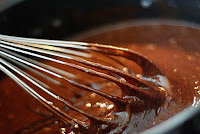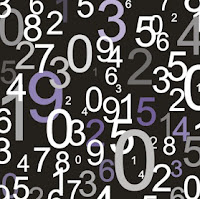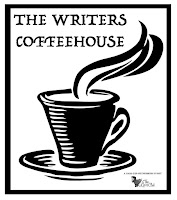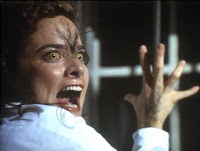Very sorry I missed last week. Last month was copyedits, this time I got layouts back for my next book (Paradox Bound, out this September, available everywhere somewhat-adequate books are sold) and spent my days going through it line by line and making notes. Far too many notes, if you ask my editor.
But we’re all here now. Soooooo… let’s talk about magic tricks.
Most people tend to think of magic tricks as kind of a bam done thing. I pull your chosen card out of the deck or out from beneath your drink or out of your own shirt pocket. I cut the lady in half without killing her. Then I make the other lady float on air.
The truth is, though, well-done magic tricks almost always have a very specific set of steps. There’s a casual set-up. There’s a moment of confusion. And then there’s the big surprise that makes the audience ask “How did you do that?!”
 Think about it. When I do a card trick, the first part is actually showing you the deck of cards—a totally normal, regular deck of cards, right? And then, after you pick a card, it vanishes from the deck… waaaaait a minute. How’d I manage that, right? And then when I reach over and pull the card out of your sleeve, or point it out sitting face-up under your own drink, right there in front of you the whole time… the crowd goes wild.
Think about it. When I do a card trick, the first part is actually showing you the deck of cards—a totally normal, regular deck of cards, right? And then, after you pick a card, it vanishes from the deck… waaaaait a minute. How’d I manage that, right? And then when I reach over and pull the card out of your sleeve, or point it out sitting face-up under your own drink, right there in front of you the whole time… the crowd goes wild.
And if you like, you can hear Michael Caine explain all of that in the trailer for a fantastic, underappreciated Christopher Nolan movie.
So… why are we talking about magic tricks?
A common term that gets thrown around a lot is three-act structure. If you’ve been poking at this storytelling thing for any amount of time, you’ve probably heard it from someone. Doesn’t matter if you’re working on novels, screenplays, short stories, or even magic tricks—I’d be willing to bet late night Jack-in-the-Box money that you’ve come across this term or had it pushed at you.
I’m a big believer in three-act structure. I think a good number of flawed stories can tie their problems back to it. Or to a lack of it.
I also believe three act-structure gets misunderstood a lot. And I think there are a lot of gurus and producers out there pushing “three act structure” who… well, don’t have any clue what they’re talking about. We’ll get to that in a little bit.
Oh, one other thing. It’s important to note that three-act structure doesn’t really fit in with the other story structures I’ve talked about in the past—linear, dramatic, and narrative. It’s kind of a different thing in the way a car can be an automatic and a rifle can be an automatic, but they’re not the same kind of automatic.
Okay, so here we go…
Any sort of storytelling has a beginning, a middle, and an end.
That’s three act structure.
No, seriously. That’s pretty much it.
If we want to go into a little more detail… every kind of story needs these three stages. I’m not talking about page count, but the way my story develops. If it’s done right, any reader can tell you when these parts begin and end in my story.
In fiction we can even hang a name on each of these three acts. We call them establishing the norm, introducing conflict, and then resolution. You’ve probably heard of these, too. I’ve talked about them here before, but let’s do a quick sum up.
Establishing the norm is just that—showing how things normally are. This is when my characters go to work, pay bills, spend time with their loved ones, and so on. It’s when we often find them at their most relatable.
 Remember that everybody has a “usual day.” For Rey, a usual day means scavenging parts from middle-of-nowhere wrecks on a middle-of-nowhere planet. For Steve Rogers, a usual day means going for a morning jog, meeting up with a coworker, and then dealing with some international terrorists who’ve seized a ship on the high seas. If my characters don’t have a normal day, they can’t have an abnormal day, a day when they’re thrown out of their element and have to impress us somehow.
Remember that everybody has a “usual day.” For Rey, a usual day means scavenging parts from middle-of-nowhere wrecks on a middle-of-nowhere planet. For Steve Rogers, a usual day means going for a morning jog, meeting up with a coworker, and then dealing with some international terrorists who’ve seized a ship on the high seas. If my characters don’t have a normal day, they can’t have an abnormal day, a day when they’re thrown out of their element and have to impress us somehow.
Introducing conflict means something is knocking my characters out of their comfortable little world and forcing them to take some sort of action. The new manager says they have to pay all their back rent by the end of the month. A dying stranger shoves a magic amulet into their hands. Turns out that one night stand is going to have nine months of consequences followed by eighteen years of repercussions. Or maybe some little droid shows up claiming it has information it has to get to the resistance, followed by a lot of people with guns who want said droid.
Note that this can happen more than once in my story. If my character keeps getting pushed further and further out of his or her comfort zone… that’s great.
Also worth noting that conflict has to cause, well, conflict. If I introduce something that doesn’t bother my protagonist, or takes no real effort to deal with… that’s just boring. If it’s boring to them, it’s going to be boring to my audience.
Resolution is, big surprise, when things come to an end. Usually because my protagonist has taken some action and made things come to an end. It’s when answers are made known, hidden things get revealed, and plot threads all come together.
Word of warning—if I’m submitting to contests or trying to catch the attention of an agent or editor, ending my story with “to be continued” immediately costs me at least twenty points in whatever grading system they’re using (so hope it isn’t a ten-point one). If I’m doing this, my story doesn’t actually have a resolution. It might even mean that I—the writer—don’t have a resolution for it. And since this third step is an important part of the story, well…

Look if I stop at mixing the cake and don’t take that last step, I can’t be surprised if most people don’t want to eat it, right?
Or that some of it call it “sludge” instead of “cake”…
That brings up another point. Y’see, Timmy, a story that doesn’t have these three parts has a sort of… meandering quality to it. Characters either do nothing or do tons of stuff without any real motivation to it.
This generally comes from writers only having one or two parts of a story. Maybe they had a great opening and a cool middle, but didn’t quite know how to end it. Or they came up with a cool opening and a clever end, but never figured out how those two acts would connect. I’ve even seen a few folks write a very cool opening… and nothing else. There was a great set up and then the story sort of spiraled off into… nowhere.
Okay a few last notes. I’ll try to be quick.
First, there are still a few little caveats to this, of course. Many stories start in the middle and take a bit before they go back and explain the beginning. In medias res some folks like to call it. Other stories start at the very end, and use the ending as a frame for the whole story. All of this is fine, and I’m sure all of us could list off a ton of great examples of books and movies that do this.
What we need to remember, though, is all these stories still have a beginning, a middle, and an end, even if they’ve been juggled around a bit in their tellings. As I’ve mentioned before, the narrative structure of a story doesn’t change the linear structure. The events have a definitive starting point. The characters have a baseline the audience sees them at. There’s a progression brought about by conflict and changes resulting from the conflict. And it all leads to a definitive conclusion.
Like the examples I mentioned above, I’ve seen stories that try to come in on the action, on the conflict. Thing is, they never go back to explain how these events began. The story’s left flailing without that first act, wondering what set off these events and why the character’s invested in stopping them (or helping them along).
Second thing, which I promised at the top, is some of the nonsense that gets spread about three act structure. I see a lot of folks try to argue that all these acts have very specific lengths–you have to be done with this by page sixteen, this must happen by page twenty-three, that must be revealed by page forty-two. That’s just nonsense, and it’s easy to find hundreds of examples that prove it’s nonsense.
I think a lot of this comes from people who want to quantify stories somehow. They want to be able to create a marketable formula of “how to make a bestseller,” and that’s just not possible. Every story is going to have its own pace, and altering that pace at arbitrary points isn’t going to make it appeal to more people.

I’ve also seen some people who try to argue for six act structure, seven act structure, or some other number. They justify this by pointing out that television shows often have four or five acts. Sometimes a teaser and a closing, too.
I think these arguments come from misunderstanding what three-act structure really is. These particular gurus are trying to tie it back to those larger, more expansive structures I mentioned earlier. Television shows do have multiple acts, yes, but that’s structuring for a format, not for a story. I know a bunch of television writers, and none of them think that their scripts have a beginning, a middle, another middle, one more middle, and then an end.
Now, all of this leads us to a question some of you have probably been wondering about since I started this little rant. What’s so important about three-act structure? Why do we need it?
The big reason is because a beginning, middle, and end in my plot usually means we’ve had character growth in our story. You may have heard me mention one or thrice that good writing is about good characters. As readers, we want to see who they start off as, what changes them, and how the change affects them in the long run. That change is a real response that grew out of his or her experiences.
When that happens, readers stop thinking about these creations of mine as characters and start thinking of them as people.
Next time, since I’ve just waded through a ton of tweaks and edits… I thought we could talk a bit about tweaks and editing.
Until then, go write.
 When we talk about structure, we’re talking about the underlying framework of a story. The skeletal system, or maybe the nervous system, depending on how you want to look at it. And, just like with anatomy (or architecture or programming) there can be more than one underlying system. And they all work together to make a functioning person. Or house. Or story.
When we talk about structure, we’re talking about the underlying framework of a story. The skeletal system, or maybe the nervous system, depending on how you want to look at it. And, just like with anatomy (or architecture or programming) there can be more than one underlying system. And they all work together to make a functioning person. Or house. Or story. Jack’s life is pretty straightforward, for our purposes here. A is when young Jack first meets the Ninth Doctor and decides to travel with him for a while. B is when he later encounters the Tenth Doctor and Martha. C is when they all briefly meet again a year or so later to stop Davros and the Daleks. They meet again (D) much, much later in Jack’s life. And Eis when the Doctor’s there for Jack’s death at the ripe old age of twenty billion or so (mild spoilers, sorry).
Jack’s life is pretty straightforward, for our purposes here. A is when young Jack first meets the Ninth Doctor and decides to travel with him for a while. B is when he later encounters the Tenth Doctor and Martha. C is when they all briefly meet again a year or so later to stop Davros and the Daleks. They meet again (D) much, much later in Jack’s life. And Eis when the Doctor’s there for Jack’s death at the ripe old age of twenty billion or so (mild spoilers, sorry). 









